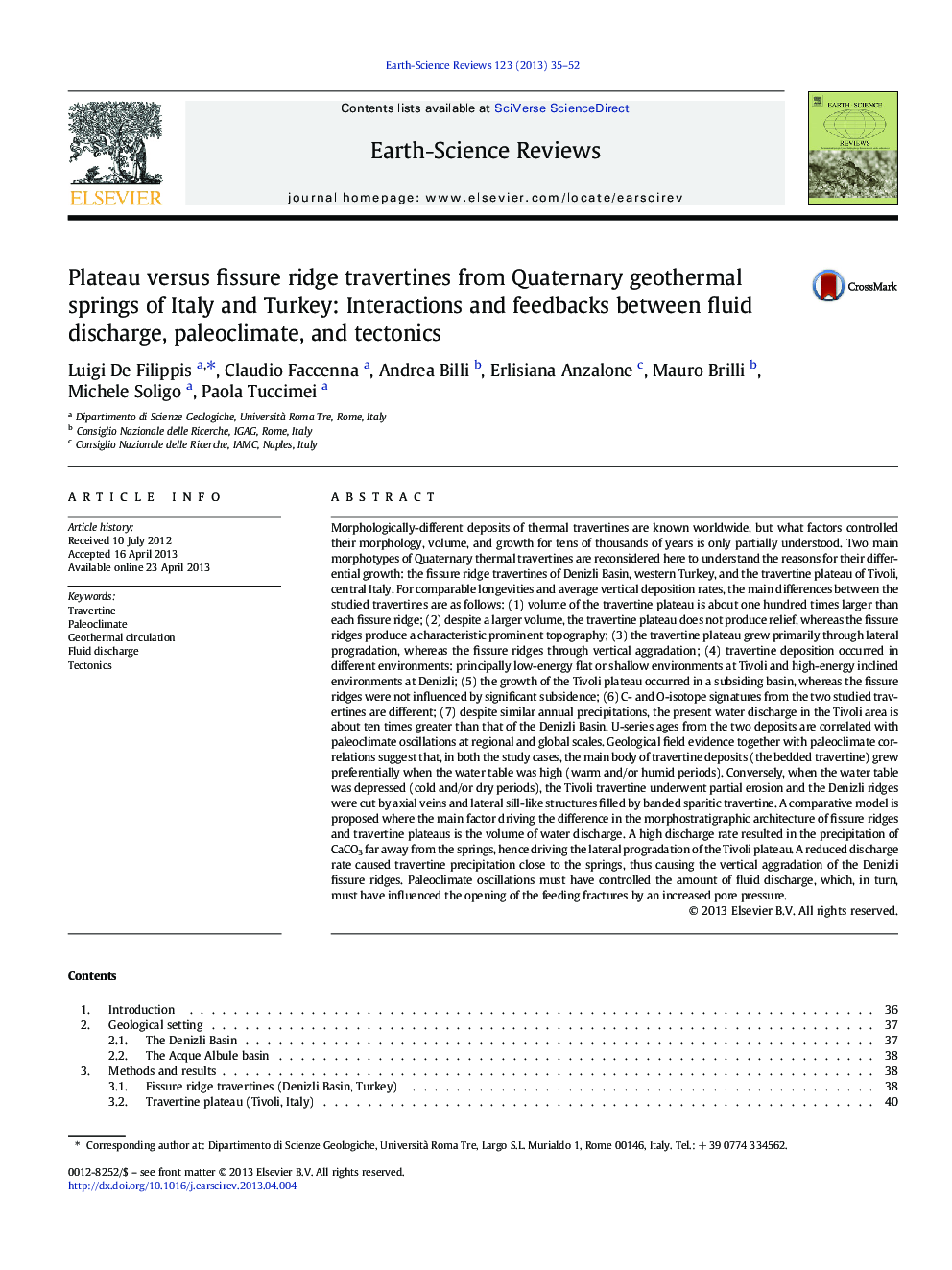| کد مقاله | کد نشریه | سال انتشار | مقاله انگلیسی | نسخه تمام متن |
|---|---|---|---|---|
| 4725825 | 1639979 | 2013 | 18 صفحه PDF | دانلود رایگان |
Morphologically-different deposits of thermal travertines are known worldwide, but what factors controlled their morphology, volume, and growth for tens of thousands of years is only partially understood. Two main morphotypes of Quaternary thermal travertines are reconsidered here to understand the reasons for their differential growth: the fissure ridge travertines of Denizli Basin, western Turkey, and the travertine plateau of Tivoli, central Italy. For comparable longevities and average vertical deposition rates, the main differences between the studied travertines are as follows: (1) volume of the travertine plateau is about one hundred times larger than each fissure ridge; (2) despite a larger volume, the travertine plateau does not produce relief, whereas the fissure ridges produce a characteristic prominent topography; (3) the travertine plateau grew primarily through lateral progradation, whereas the fissure ridges through vertical aggradation; (4) travertine deposition occurred in different environments: principally low-energy flat or shallow environments at Tivoli and high-energy inclined environments at Denizli; (5) the growth of the Tivoli plateau occurred in a subsiding basin, whereas the fissure ridges were not influenced by significant subsidence; (6) C- and O-isotope signatures from the two studied travertines are different; (7) despite similar annual precipitations, the present water discharge in the Tivoli area is about ten times greater than that of the Denizli Basin. U-series ages from the two deposits are correlated with paleoclimate oscillations at regional and global scales. Geological field evidence together with paleoclimate correlations suggest that, in both the study cases, the main body of travertine deposits (the bedded travertine) grew preferentially when the water table was high (warm and/or humid periods). Conversely, when the water table was depressed (cold and/or dry periods), the Tivoli travertine underwent partial erosion and the Denizli ridges were cut by axial veins and lateral sill-like structures filled by banded sparitic travertine. A comparative model is proposed where the main factor driving the difference in the morphostratigraphic architecture of fissure ridges and travertine plateaus is the volume of water discharge. A high discharge rate resulted in the precipitation of CaCO3 far away from the springs, hence driving the lateral progradation of the Tivoli plateau. A reduced discharge rate caused travertine precipitation close to the springs, thus causing the vertical aggradation of the Denizli fissure ridges. Paleoclimate oscillations must have controlled the amount of fluid discharge, which, in turn, must have influenced the opening of the feeding fractures by an increased pore pressure.
Journal: Earth-Science Reviews - Volume 123, August 2013, Pages 35–52
